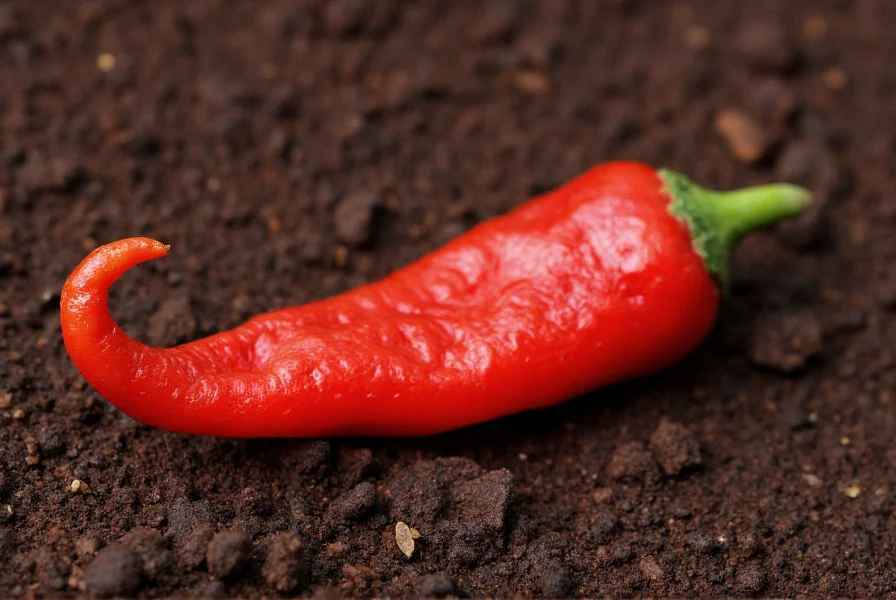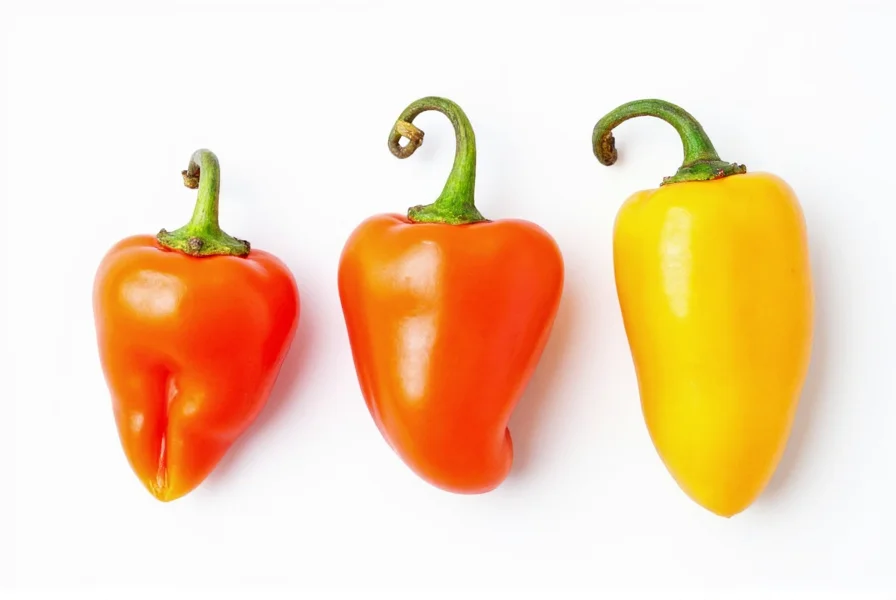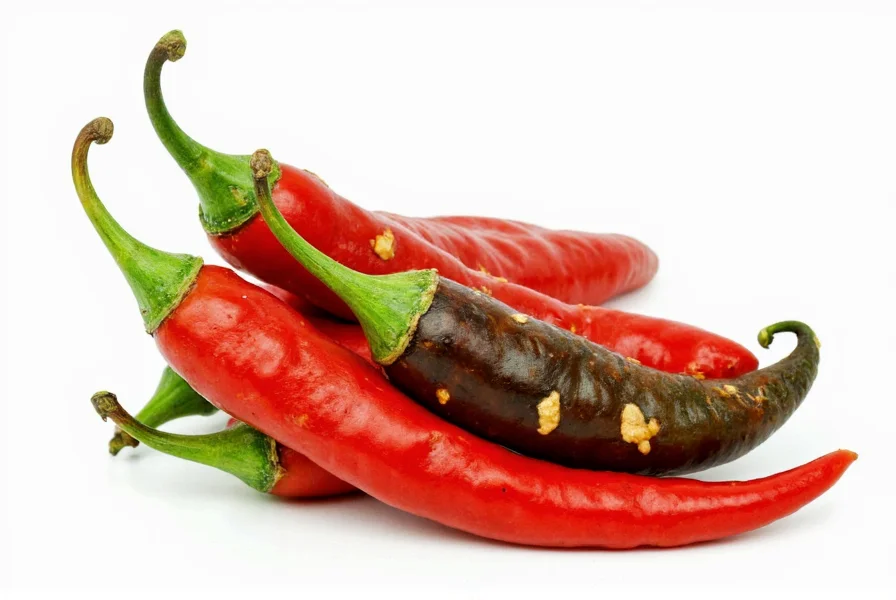Understanding the scorpion pepper's extreme heat requires context about where it stands on the Scoville scale. Developed by pharmacist Wilbur Scoville in 1912, this measurement quantifies capsaicin concentration—the compound responsible for a chili pepper's burning sensation. The higher the Scoville rating, the more intense the heat.
Scorpion Pepper Varieties and Heat Range
While several scorpion-type peppers exist, the Trinidad Moruga Scorpion holds official recognition as one of the hottest. Laboratory tests at the Chile Pepper Institute confirmed its heat range of 1.2-2 million SHU. This surpasses the habanero (100,000-350,000 SHU) by more than threefold and exceeds the ghost pepper (855,000-1,041,427 SHU) at its peak measurements.
| Pepper Variety | Scoville Heat Units (SHU) | Relative Heat Comparison |
|---|---|---|
| Trinidad Moruga Scorpion | 1,200,000-2,000,000 | 400-800x jalapeño |
| Ghost Pepper (Bhut Jolokia) | 855,000-1,041,427 | 200-250x jalapeño |
| Habanero | 100,000-350,000 | 20-40x jalapeño |
| Jalapeño | 2,500-8,000 | Baseline |
What 2 Million Scoville Units Feels Like
Experiencing scorpion pepper heat isn't merely about spiciness—it triggers physiological responses. Consuming even a small amount typically causes:
- Immediate burning sensation across lips and tongue
- Profuse sweating and facial flushing within seconds
- Temporary difficulty speaking or breathing
- Watery eyes and nasal discharge
- Potential nausea in inexperienced consumers
Unlike milder peppers where heat subsides relatively quickly, scorpion pepper effects can persist for 30-45 minutes due to its high capsaicinoid concentration. The delayed peak intensity—reaching maximum burn after 5-10 minutes—often catches inexperienced eaters by surprise.

Safety Considerations for Handling
Proper handling techniques are essential when working with scorpion peppers. Capsaicin transfers easily to skin and eyes, causing severe irritation. Safety recommendations include:
- Wearing nitrile gloves during preparation (latex provides insufficient protection)
- Avoiding contact with face or eyes throughout handling process
- Using dedicated cutting boards that won't transfer oils to other foods
- Washing hands thoroughly with soapy water after handling—even with gloves
- Having dairy products like milk or yogurt nearby to neutralize accidental exposure
Culinary Applications and Misconceptions
Despite its fearsome reputation, the scorpion pepper offers complex flavor beyond pure heat. When used judiciously, it contributes:
- Fruity undertones with notes of tropical fruit
- Subtle smokiness in certain varieties
- Remarkable depth to hot sauces and preserves
A common misconception is that scorpion peppers represent the absolute pinnacle of heat. While among the hottest naturally occurring peppers, laboratory-created hybrids like the Pepper X (reportedly 3.18 million SHU) and the Dragon's Breath pepper claim higher measurements, though these lack the widespread verification of the Trinidad Moruga Scorpion.

Responsible Consumption Guidelines
For those attempting to consume scorpion peppers, medical professionals recommend:
- Starting with minuscule amounts (1/8 teaspoon of prepared pepper)
- Never consuming on an empty stomach
- Having dairy products immediately available (milk, yogurt, or ice cream)
- Avoiding alcohol as a remedy (it spreads capsaicin rather than neutralizing it)
- Refraining from consumption if you have gastrointestinal conditions
Individual tolerance varies significantly based on genetics and previous exposure to capsaicin. What proves manageable for experienced chili eaters may cause severe discomfort for others. The delayed heat response of scorpion peppers makes portion control particularly crucial.
Frequently Asked Questions
How does scorpion pepper compare to ghost pepper on the Scoville scale?
The Trinidad Moruga Scorpion (1.2-2 million SHU) significantly exceeds the ghost pepper (855,000-1,041,427 SHU) at maximum measurements. While ghost peppers were once considered the hottest, laboratory testing confirmed scorpion peppers can be up to twice as hot. However, both peppers show considerable variation in heat depending on growing conditions.
What happens if you eat a whole scorpion pepper?
Consuming an entire scorpion pepper typically causes immediate burning pain, profuse sweating, difficulty breathing, and potential nausea. Medical attention may be required if severe reactions occur. The intense capsaicin concentration can trigger temporary gastrointestinal distress and, in rare cases, cause chest pain mimicking heart attack symptoms (capsaicin-induced takotsubo cardiomyopathy).
How long does scorpion pepper heat last after consumption?
The intense burning sensation from scorpion peppers typically peaks at 5-10 minutes and gradually subsides over 30-45 minutes. Complete elimination of capsaicin from the system takes several hours. Consuming dairy products like milk or yogurt provides temporary relief by binding to capsaicin molecules, but doesn't accelerate the overall duration.
Can you build tolerance to scorpion pepper heat?
Yes, regular exposure to capsaicin can increase tolerance through desensitization of TRPV1 receptors. However, this process requires gradual, controlled exposure starting with milder peppers. Attempting to build tolerance by immediately consuming scorpion peppers often leads to negative experiences that discourage further experimentation. Medical professionals advise against deliberately increasing capsaicin tolerance due to potential gastrointestinal damage.











 浙公网安备
33010002000092号
浙公网安备
33010002000092号 浙B2-20120091-4
浙B2-20120091-4